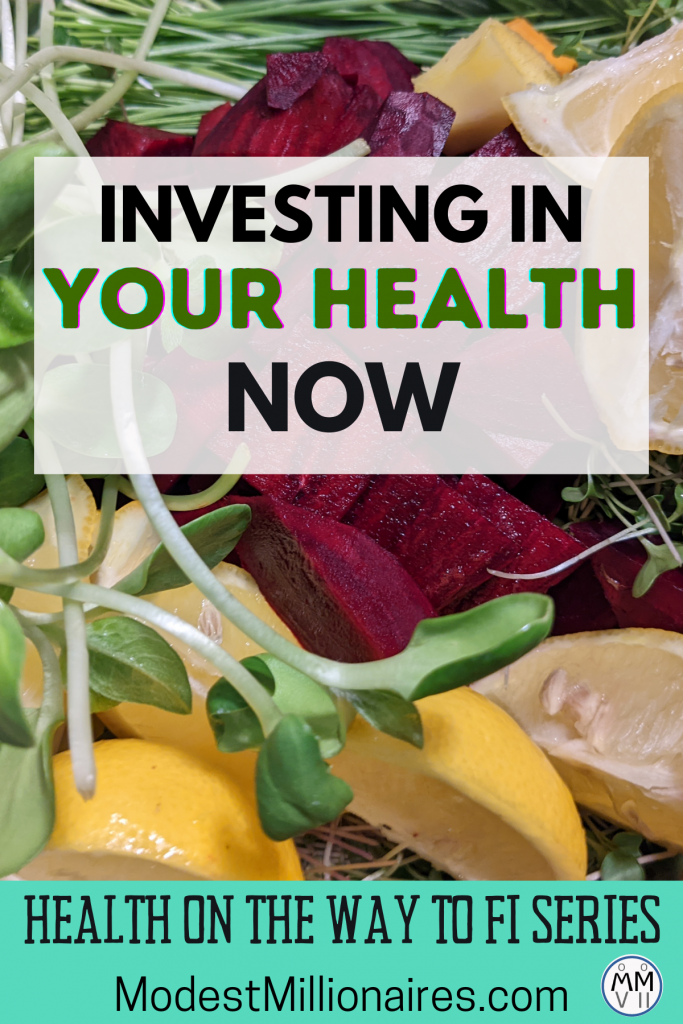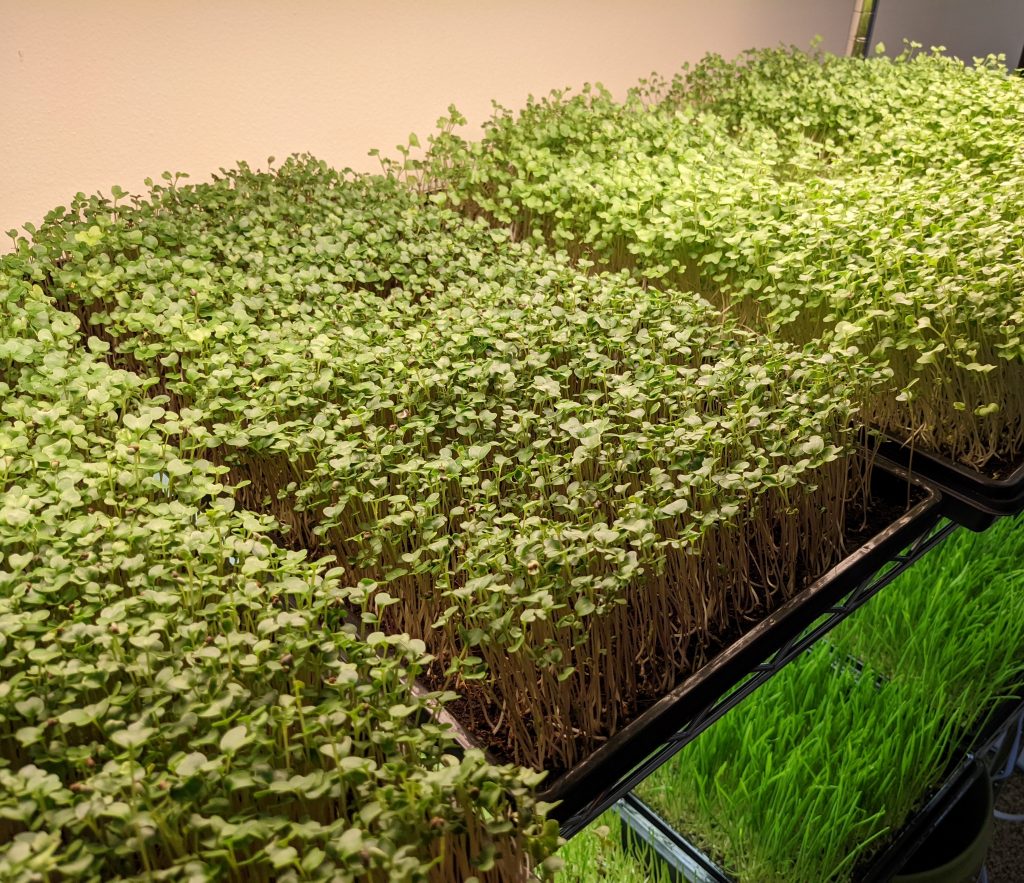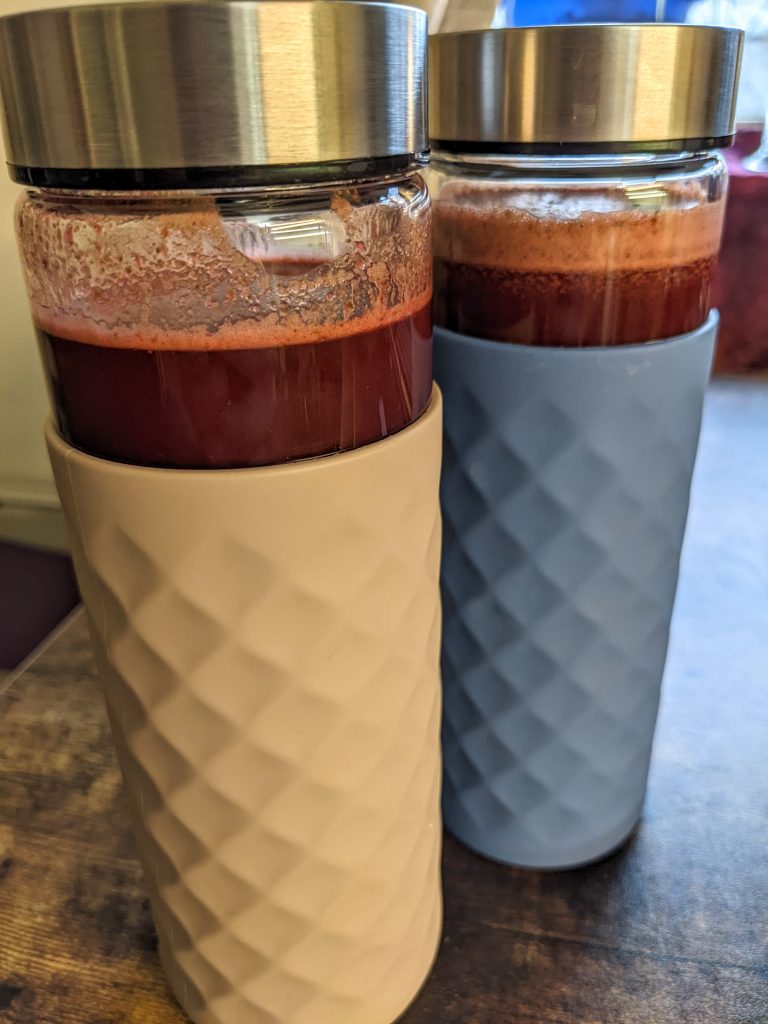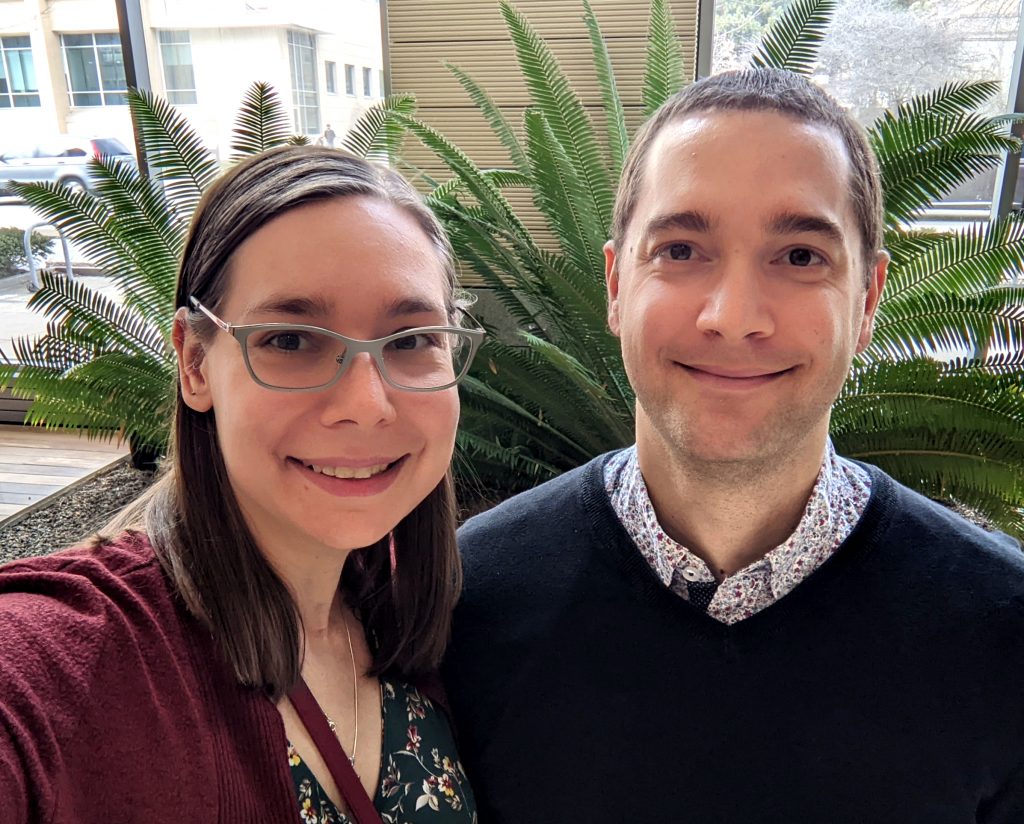
It makes me very happy that the second Health on the Way to FI comes to us from someone who has a deep passion for three topics near and dear to me: finance, nutrition and sustainable living. Today we dive into Diandra’s story of prioritizing her health on the way to financial independence, a process which included leaving a high paying job because it was taking a toll on her health while on the Slow FI track.
Diandra, who writes at That Science Couple with her husband Bradley, is currently a PhD student in nutritional sciences with a passion for evidence-based nutrition. Even before entering the workforce, she knew that prioritizing her health would be essential. Back in 2012, she had been diagnosed with stage 1 thyroid cancer.
Such a diagnosis would mean scans, bloodwork and plenty of doctor’s appointments which can have a significant financial toll for someone living in the US. In this interview, she explains the strategies she utilized to face such expenses as well as the habits she’s put in place to continue making her health a priority.
Despite knowing that health needed to be a priority, her journey includes moments in a high-stress career where taking care of her health ended up taking the back seat. The impacts of this left her feeling unsatisfied. Fortunately, discovering what others had done with FU money motivated her to make some significant changes to better align her life with her desires, without compromising her long term goal of FI.
I’m truly excited for you to read her story and experience in prioritizing her health on the journey to FI .
1. Tell me about you and where you currently stand on your trajectory to financial independence.
I’m currently a graduate student in a PhD program for Nutritional Sciences. I came across the financial independence movement back in 2014 shortly after I graduated college with my M.S. in Cell & Molecular Biology. The motivation to get away from living paycheck to paycheck came early in my career. I started learning from and working with my boyfriend, now husband, to get out of debt and start saving for the future. While I have taken a severe pay cut to return to school, I am still at 32% of my FI goal individually, and with my husband we are over 40% of the way there.
2. What does supporting maintaining good physical & mental health currently entail at this point in your journey? Has this changed through various phases of your journey to FI?
In hindsight, there have been instances in which my mental and physical health took a back seat to my earning potential. While it is great to push towards that large FI goal, I realized that it is easier to maintain your health than to try to regain it.
Early Health Crisis
Back in 2012, I was first diagnosed with stage 1 thyroid cancer. Even before I went into the official workforce, I knew that my health needed to be a top priority. One of the strategies that I utilized was choosing a High Deductible Health Plan (HDHP) and starting an HSA.
I have heard people say before “HSAs are only good for healthy people.” I am an example that it doesn’t always hold true. Instead of using the HSA as a retirement vehicle, I used it to help pay for health expenses when needed. Each year when I had a HDHP, I contributed the max allowable. Then, when the bills for Doctor’s appointments, scans, and bloodwork hit, I would pay for as much out of pocket as I could and kept the receipts for later reimbursement.
When I started my PhD program in 2019, I no longer had an HDHP. While I couldn’t contribute anymore, I still had some funds invested. Now, I make sure to sell when the markets are doing better and limit my withdrawals to once or twice a year. Because of this, the account has been able to stay afloat and helped me to take care of my health, even if my paychecks do not cover it.
My Industry Days
I worked my way up from Research Associate to Scientist, but I quickly realized that money wasn’t the only driver for me. I had went from earning $15/hr to over $90k/y with bonuses over the course of 6 years. However, with the higher paycheck came a 1.5hr commute (one way) and high stress. I used the salary to fully fund my 401k for the first time and buy a vehicle with cash, but I did not take care of myself. I had carpal tunnel and my mental health was struggling.
After reading about what others had done once they had FU money, I decided to start negotiations with my employer. I was able to get time off for physical therapy and work remotely 2 days a week (which was a big deal in pre-Covid times). While this helped, I could tell that my career goals no longer aligned with my companies. I applied to PhD programs so I could directly make a difference in people’s lives.
Once I was accepted into a program, I spent the last few months of my job working part-time and partially remote. Looking back at it now, while taking a 70% pay cut was dramatic, it has set me off on a path where mental and physical health are a priority.
3. Do you expect your routines around maintaining good physical & mental health to change in the future? How so?
I used to always put others first, whether it be for work or in my personal life, and this has been a long-term drain on me. I thought I was being frugal by cutting down on small purchases, but when it comes to health, I can admit that I have struggled with being cheap.
I never really wanted to do things for myself until this year when I was reminded that we shouldn’t take our health for granted. Now I am spending the money where I need to, the additional Doctor’s appointments, sauna & massage sessions, organic produce, and supplements that might be helpful for my condition. I see all of this as an investment in my health, and spending that I will never regret.

There is no time like the present! I am not waiting to start working on my health. I expect our routines around maintaining good physical & mental health will be similar once we reach FI. Once we step away from the corporate world, we will have more time to grow our own food and energy to put into free forms of self-care.
4. How do your current health habits impact your quality of life?
My current health habits have dramatically improved my quality of life. Covid was a hard time for us all, and living 800 miles away from family for school did not help. I know that I was suffering from depression but was not ready or able to get help. I was cutting corners when it came to my nutrition and heavily relied on processed foods. Most days I felt totally drained, and it was hard for me to move forward personally and professionally.

This February, my husband and I were revitalized in how we can contribute to our own health. I started juicing and we made a shift to incorporate more raw foods. The depression has mostly faded away and I feel energized after every meal. Weekly sauna sessions help me to detox literally and figuratively as well. It’s nice to have some quiet time to myself that I am truly focusing on my health.
5. How does maintaining good health impact your financial goals or timelines and how have you approached planning for health related costs?
Health related costs have extended our timeline. However, what is the point of rushing to financial independence if you don’t have your health when you get there? I am currently utilizing my HSA to cover costs while I am in a low-income bracket. My husband has been contributing to his HSA without using it, which allows the investments to grow and will help cover future healthcare costs.
I anticipate a similar level of spending on health once we reach FI. We plan to purchase health insurance through the marketplace which may be higher than our current rates. However, creating a life centered around self-care and being intentional should decrease our healthcare spending in other ways.
6. What challenges have you encountered with maintaining good physical & mental health & how have you worked on overcoming these?
Limiting Beliefs: Your paycheck does not define you.
This has been a challenge I faced with my mental health when returning to a student stipend. The first time I was in graduate school, I didn’t invest a dime. This time around, I did not invest the first year because I thought “I don’t make enough money.” During the second year, I realized this was a limiting belief and started investing again. I started out investing 10% and have upped it to 15% or more since then. While it’s not as amazing as my husband saving over 50%, it is something. Building upon what I invested while I was in the industry, it’s amazing to see how that seed can grow overtime.
Access to affordable healthy foods
Another challenge that I faced when trying to improve my nutrition was access to affordable health promoting foods. During the summer months, I found that joining a crop sharing arrangement (CSA) or utilizing the local farmers market allowed us to get fresh, local, organic foods. However, when it comes to winter, these were no longer an option.

This year we got creative. We purchased a Costco membership which allows us to buy organic foods in bulk at a discounted price and we started growing our own microgreens in my home office. This provides us with fresh greens to juice on a weekly basis at 50% the cost of buying them in the store. We also have the added benefit of the extra oxygen the plants produce, while feeling more connected to our food.
7. Which resources have helped you make progress in transforming and/or maintaining good habits around your health?
What gets measured, gets managed
One of the resources that I created for my blog, ThatScienceCouple, is called the “Eat for Health” tracker. I designed and launched level 1 in October of 2021, and I took the time to use the checklist myself for the first month. It focuses on what daily habits you can form, no matter where you are starting. Ultimately, pointing you in the direction of eating in a way that better supports your health. The focus is on what you are gaining, not on what you are taking away. Our memories are unreliable when it comes to remembering the foods that we eat. Tracking your food intake will help you make improvements and start moving your health in a positive direction. (Note from Mel: Similarly to tracking your spending!)
Accountability Partner
When it comes to your health, it’s about consistency. Having someone to join you at the gym or check in on your healthy habits can make a big difference. My husband is my accountability partner. During times when I wasn’t working out or eating right, he helped get me back on track. If you have a friend or family member who shares similar goals, you can share your successes and struggles together. If you are the type of person who does better with a coach, then get a Personal Trainer or Nutritionist to help you on your journey.
8. How did your pursuit of FI help or hinder prioritizing good health along the journey to FI?
My pursuit of FI has had times where it hindered prioritizing good health. While that big FI number is a strong driver, we don’t stop to think about the consequences of the speed at which we reach it. Early on in our FI journey, after paying off debt and starting to invest, I was drawn to getting that higher paid salary. I figured it would super charge my timeline, maybe I wouldn’t retire by 30 but 35 could be a possibility. I did what I could to move up the corporate ladder and when I reached my highest earning, the stress was the highest as well. This was all great financially, but my health was paying the price. I had no healthy outlets for stress relief, and so much of my life was my job.
After stepping away and returning to school, I can say that my FI pursuit is now helping me prioritize my health. My HSA invested funds have been able to sustain my medical bills thus far and I’m 3 years post investing. In addition, I have a brokerage account that I started during my early FI days that serves as an emergency fund if I need it.
Being on the path to FI has made going to a lower paying position bearable. I know that while I may not have a high salary or savings rate currently, I am building towards something greater in the future. I now have the option to take my foot off the gas, let my investments grow, and put my health first. If it adds another 5 years on to our plan then it is well worth it.
Recently, I started working with Doctor’s and Naturopaths to get a fuller picture of my health. Every dollar spent to look at myself as a whole person is an investment in my future health, and one that I will not regret.
9. What advice do you have for someone struggling to maintain good health on their journey to FI?
Don’t get caught up in lost opportunity cost
Sometimes the FI world gets wrapped up too much in this concept. For example, if you spend $2000 today, with compound interest, over 30 years that could have been worth over $15k at an average 7% return +/- 3%. While watching money grow over time is inspiring, it should not be the reason you don’t invest in your health.
It’s always good to make sure you are coming from a sound financial base. If your health is struggling, now is the time to address it. It is easier to make small changes along the way to maintain your health. The longer you live with chronic pain or disease, the harder it will be to regain your health. That $2000 you could have spent initially to get yourself back on track could easily balloon into $10k or more over a 5-year span of time. It’s important to realize that second opinions and out of network costs are much more expensive than your initial investment could have been.
If you need help, spend the money!
Be frugal, not cheap when it comes to your health. Cutting corners on health is never a good thing. If you know you have a health issue, mental or physical, address it. We have two options: to deal with life being mediocre whether it’s our mental or physical health, or to get help. Even if you think “Well that’s just the way it will always be,” you don’t have to live life at 50%. There are steps you can take to get more of your health back. While it may never be 100% like when you were 20, I’ll take 80-90% any day.
Once I saw firsthand the impact that diet and lifestyle changes have made in my life, I knew I wanted to help others reclaim their health as well. Now I run my own Evidence-Based Nutrition Coaching program. I help clients learn to utilize nutritional changes to identify food allergies, feel better, and even better manage a chronic illness. In a matter of months, I have already seen changes in my clients physical and mental health.
Conclusion
What I love about Diandra’s story is that she is making the most of the present to build up and maintain healthy habits. Reaching FI will simply mean more time for her and her husband to grow their own food and prioritize self-care. It won’t translate into huge changes because they are already putting their health at the forefront of their lives.
Diandra has also learned to evaluate the costs related to health with an investment mindset. That is with a reflection on the ongoing benefits and return on that initial spending in the long term. It takes practice and intentional efforts to overcome thoughts of scarcity. To do so, she utilizes the power of working through limiting beliefs and finding the right support, such as the accountability partner that her husband represents for her.
Finally, she puts her knowledge and experience to good use by helping others through her evidence-based nutrition coaching. I’m in awe of her dedication to living a healthy life on her way to FI, as well as helping others do the same and am so thankful that she accepted to share her story with all of us.
If you’d like to follow Diandra’s journey, you can do so in the following ways:

For recent posts and access to the free “Eat for Health” trackers, subscribe to Diandra and Brad’s Blog at ThatScienceCouple.com
You can also find them on Twitter @sciencecouple or on Facebook
Interested in Evidence-Based Nutrition Coaching? Diandra is currently accepting new clients! Check out her Coaching page
